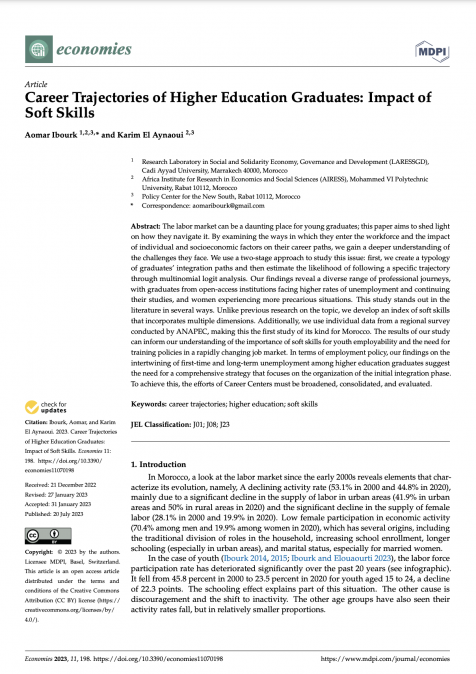Publications /
Paper in Academic Journals
This paper was originally published on mdpi.com
The labor market can be a daunting place for young graduates; this paper aims to shed light on how they navigate it. By examining the ways in which they enter the workforce and the impact of individual and socioeconomic factors on their career paths, we gain a deeper understanding of the challenges they face. We use a two-stage approach to study this issue: first, we create a typology of graduates’ integration paths and then estimate the likelihood of following a specific trajectory through multinomial logit analysis. Our findings reveal a diverse range of professional journeys, with graduates from open-access institutions facing higher rates of unemployment and continuing their studies, and women experiencing more precarious situations. This study stands out in the literature in several ways. Unlike previous research on the topic, we develop an index of soft skills that incorporates multiple dimensions. Additionally, we use individual data from a regional survey conducted by ANAPEC, making this the first study of its kind for Morocco. The results of our study can inform our understanding of the importance of soft skills for youth employability and the need for training policies in a rapidly changing job market. In terms of employment policy, our findings on the intertwining of first-time and long-term unemployment among higher education graduates suggest the need for a comprehensive strategy that focuses on the organization of the initial integration phase. To achieve this, the efforts of Career Centers must be broadened, consolidated, and evaluated.









